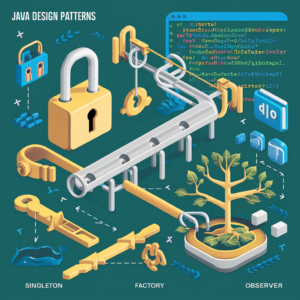Introduction:
In the world of microservices architecture, where applications are composed of loosely coupled services, ensuring resilience and fault tolerance is crucial for maintaining system stability and availability. The Circuit Breaker pattern is a key component in achieving resilience in distributed systems. In this article, we’ll explore the Microservices Circuit Breaker pattern, its principles, implementation, and benefits in building robust and reliable microservices-based applications.
Understanding the Circuit Breaker Pattern:
The Circuit Breaker pattern is a design pattern used in distributed systems to prevent cascading failures and improve system reliability. Inspired by its electrical counterpart, the Circuit Breaker pattern monitors the availability and responsiveness of remote services. If the remote service experiences failures or becomes unresponsive, the Circuit Breaker trips and redirects requests to an alternate path or returns predefined fallback responses, thereby isolating the failing component and preventing it from affecting the entire system.
Key Components of the Circuit Breaker Pattern:
- Closed State: In the closed state, the Circuit Breaker allows requests to pass through to the remote service as usual. It monitors the responses and tracks the failure rate and response times of the remote service.
- Open State: When the failure rate or response times exceed predefined thresholds, the Circuit Breaker transitions to the open state. In the open state, the Circuit Breaker intercepts requests and returns predefined fallback responses without making calls to the remote service.
- Half-Open State: After a specified time interval, the Circuit Breaker transitions to the half-open state, allowing a limited number of requests to pass through to the remote service to determine if it has recovered. If the requests succeed, the Circuit Breaker transitions back to the closed state. Otherwise, it remains in the open state.
Implementing the Circuit Breaker Pattern in Microservices:
There are several libraries and frameworks available for implementing the Circuit Breaker pattern in microservices-based applications. Some popular choices include Netflix Hystrix, resilience4j, and Istio.
Netflix Hystrix: Hystrix is a widely-used library for implementing the Circuit Breaker pattern in Java-based microservices. It provides features like circuit breaking, fallbacks, request caching, and metrics monitoring. With Hystrix, developers can annotate service methods with @HystrixCommand to define fallback behaviors and circuit breaker configurations.
resilience4j: resilience4j is a lightweight, functional library for handling transient failures and latency issues in Java applications. It offers a variety of resilience patterns, including Circuit Breaker, Rate Limiter, Retry, and Bulkhead. resilience4j’s Circuit Breaker module allows developers to configure circuit breaker policies, event listeners, and custom fallback strategies.
Istio: Istio is a popular service mesh platform for managing microservices deployments in Kubernetes environments. It provides built-in support for traffic management, security, observability, and resilience features like Circuit Breaking and Retry. Istio’s Circuit Breaker functionality allows operators to configure circuit breaker thresholds, timeouts, and outlier detection settings at the service mesh level.
Benefits of the Circuit Breaker Pattern in Microservices:
- Fault Isolation: The Circuit Breaker pattern isolates failing services, preventing them from impacting the overall system performance and availability.
- Failover Mechanism: By redirecting requests to fallback responses or alternate paths, the Circuit Breaker pattern enables graceful degradation and failover, ensuring uninterrupted service delivery.
- Resilience: The Circuit Breaker pattern improves system resilience by detecting and handling failures in remote services, minimizing downtime and improving user experience.
- Performance Monitoring: Circuit Breakers provide insights into service health and performance metrics, allowing developers to monitor and analyze system behavior in real-time.
- Scalability: By preventing cascading failures and reducing the load on failing services, the Circuit Breaker pattern improves system scalability and resource utilization.
Conclusion:
The Circuit Breaker pattern is a powerful resilience mechanism for building robust and reliable microservices-based applications. By implementing Circuit Breakers in distributed systems, developers can isolate failures, improve fault tolerance, and ensure system availability under adverse conditions. Whether you’re building cloud-native applications, microservices architectures, or service mesh environments, incorporating the Circuit Breaker pattern into your design can help you build resilient, scalable, and high-performing systems that meet the demands of modern distributed computing.





